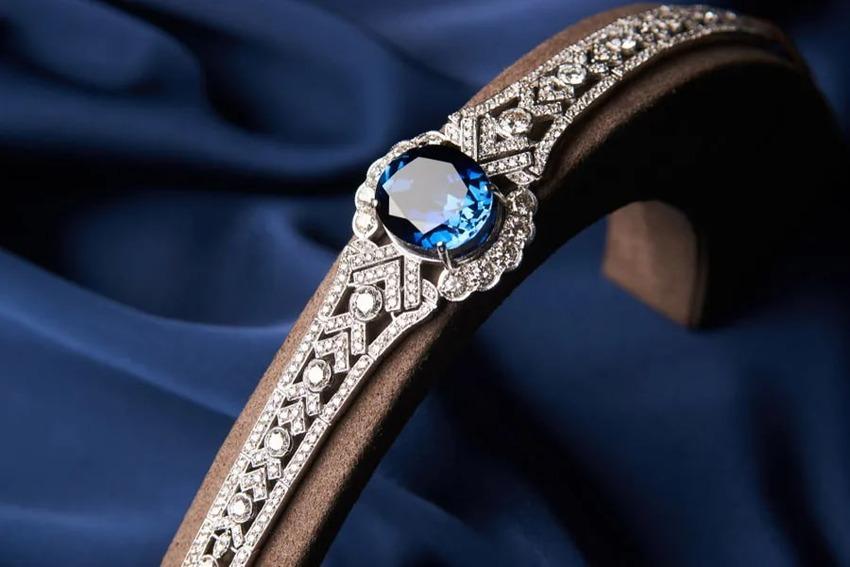Diamond jewelry photography is among the most challenging. How do you capture the unique sparkle in a still photograph when motion helps these gemstones put on a mesmerizing light show?
The struggle is real. However, there are photography strategies for showcasing diamonds in all their glory. The tips and ideas below will help take your every diamond jewelry shoot to the next level, providing ecommerce customers with a brick-and-mortar vibe.
Before diving in, let’s see what makes diamonds unique and how it affects diamond photography.
In this article
What Makes Diamonds Unique
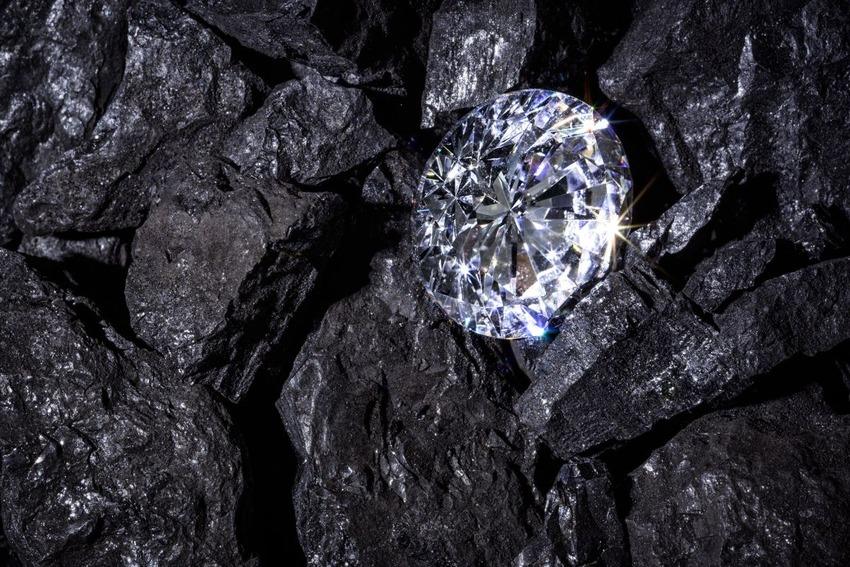
A diamond’s unique beauty lies in its interaction with light. When light enters this carbon crystal, it splits into multiple beams as it bounces off the stone’s facets—flat surfaces on its geometric shape—before exiting the diamond and dispersing.
This internal refraction, reflection, and dispersion create the spectacular sparkling effect we all know and love. That dramatic display includes three illumination effects: brilliance, fire, and scintillation.
Brilliance is the white light a diamond reflects—that familiar brightness and sparkle. Fire comes from light dispersion into the colors of the spectrum by a prismatic effect—those rainbow colors emanating from the facets. Scintillation is that dramatic light show a diamond in motion puts on—a display of white and colored lights passing through its crystalline matrix.
The more facets a diamond has, the more reflections it creates. However, the cut plays the most significant role in the sparkling effect. Diamonds with the finest cut have more brilliance and fire.
How Does That Affect Diamond Jewelry Photography?
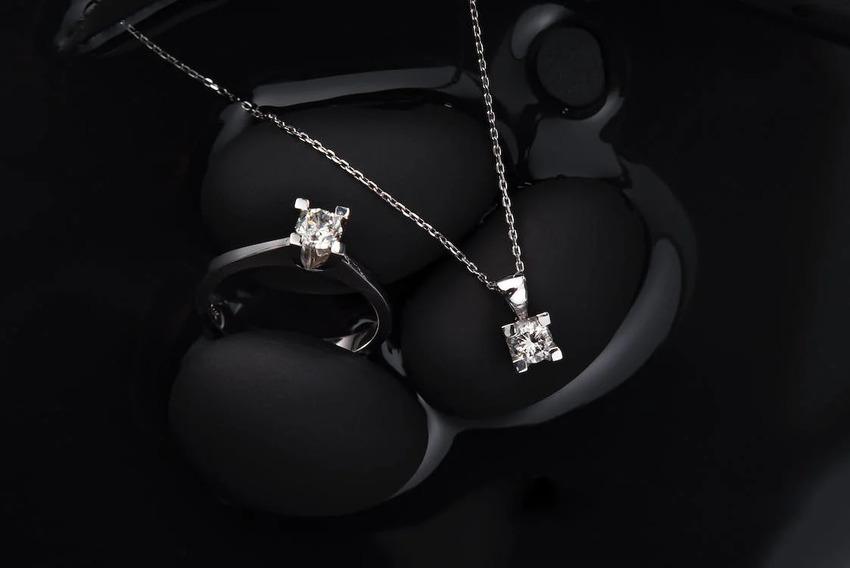
Capturing a diamond’s enchanting beauty in a photograph is tricky. These gemstones reflect light, creating unsightly glares. The more sparkling they are, the more light reaches your camera lens, making high-quality photos seem impossible.
However, you can take fantastic, glare-free photos of diamond jewelry with practice and our expert tips. Showcasing exact diamond scintillation may be impossible since that requires movement, while photographs are frozen moments in time. Still, you can show off various pieces’ brilliance and fire and make customers fall in love with them. Here’s how.
8 Tips and Ideas for Diamond Jewelry Photography
Do you wish to learn diamond ring photography for ecommerce stores, get the hang of diamond necklace photography, or master the art of photographic all diamond jewelry? The tips below will help you take impressive shots.
1. Use Soft Lighting Exclusively
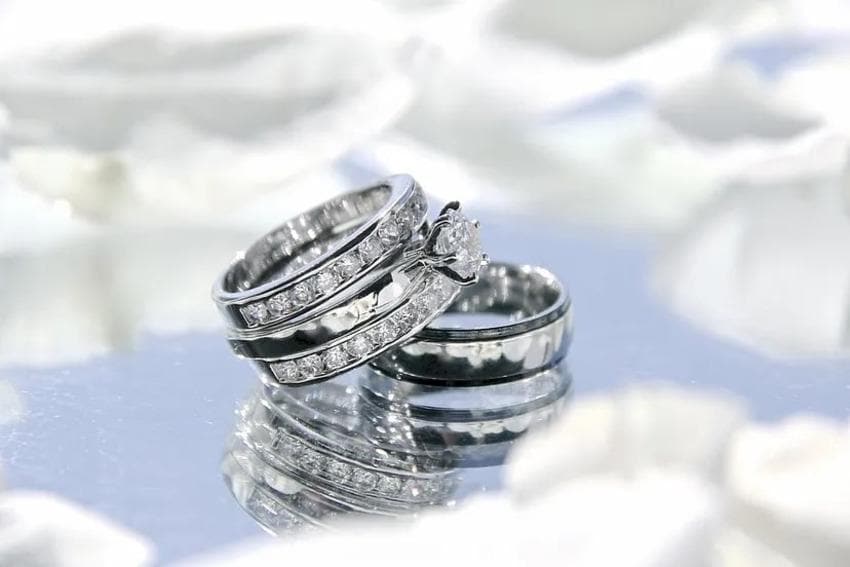
Forget about your on-camera flash. It would make the subject too bright and create unwanted shadows and glare. Instead, use soft lighting.
You can add directional LED lights to highlight diamond facets and diffuse light with reflectors, photography umbrellas, or a softbox. Additionally, consider a jewelry photography lightbox, which provides excellent illumination while eliminating shadows. It also lets you create 360° photos and videos.
2. Adjust the White Balance to Shoot Realistic Images
White balance in photography means adjusting the colors so they look realistic. In diamond jewelry photography, it means ensuring the gemstones’ and precious metals’ colors stay true to life.
Therefore, put your camera’s white balance on Auto to create accurate representations of your clients’ diamond jewelry. Also, we recommend shooting in RAW so you can make seamless adjustments in post-processing.
3. Pay Attention to Highlights
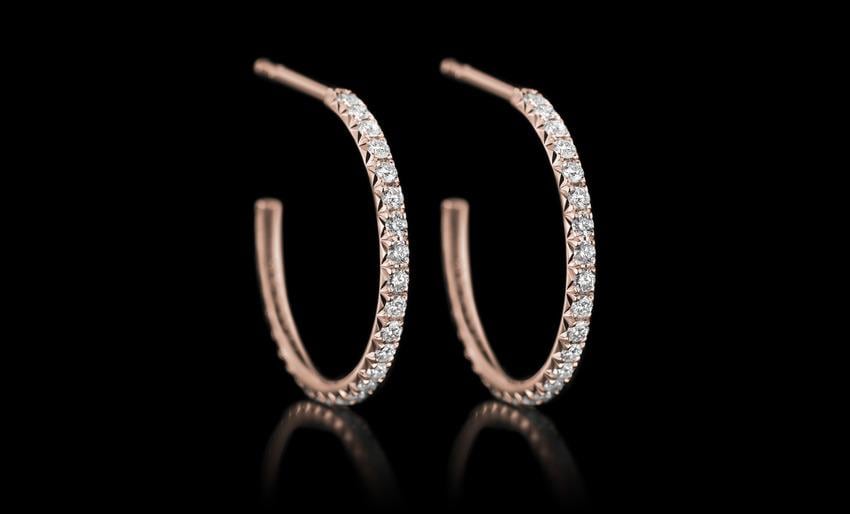
Since diamonds are reflective surfaces, diamond jewelry photography requires reducing reflections while highlighting the jewelry’s features. Soft, directional lighting can help, but its position makes all the difference.
Keep your lighting overhead at various 45° angles to avoid shining direct light on the jewelry. You might need to widen the aperture to increase the shutter speed and avoid blurry photos. Still, the light won’t reflect directly on diamond facets and distract from the jewelry’s beauty.
4. Keep Sharp Focus
Sharp focus is crucial when photographing diamond jewelry. After all, you’re taking shots at close range, which requires crispness. However, your camera’s focus might turn off when you get too close to the subject.
That’s why locking the focus is essential. Whether you use auto focus (AF) or manual focus (MF), experiment with the setting to get the desired sharpness.
What about shooting group jewelry photos? Some pieces might get out of focus because of a shallow depth of field. The same goes for diamond necklace photography using mannequins.
In that case, use focus stacking. It’s a layering technique for taking multiple shots with different focus points to create the effect of a deep depth of field without losing sharpness. Once you have all the images, you can make the desired composition in post-processing.
5. Take Macro Shots

Macro shots are perfect for diamond jewelry photography because they capture intricate details. That’s why you need macro lenses. They’ll have a shallow depth of field and let you magnify jewelry without distortion, helping you create crystal-clear photos.
We recommend getting two—one with a short focal length (at least 60 mm) for close-ups and another with a slightly longer focal length for excellent photos from a distance. Also, opt for a maximum magnification ratio of 1:1 to showcase products in their real-life size.
6. Adjust the Sharpness During Editing
Do the edges of your photographed diamond jewelry seem too sharp, no matter how you take them? Don’t worry—you can edit the sharpness.
Regardless of your chosen editing software, you’ll find a masking tool with filters for adjusting the sharpness amount, radius, and noise. Additionally, you can remove the lens blur.
Read more: best free online AI photo editor
7. Combine Natural Elements
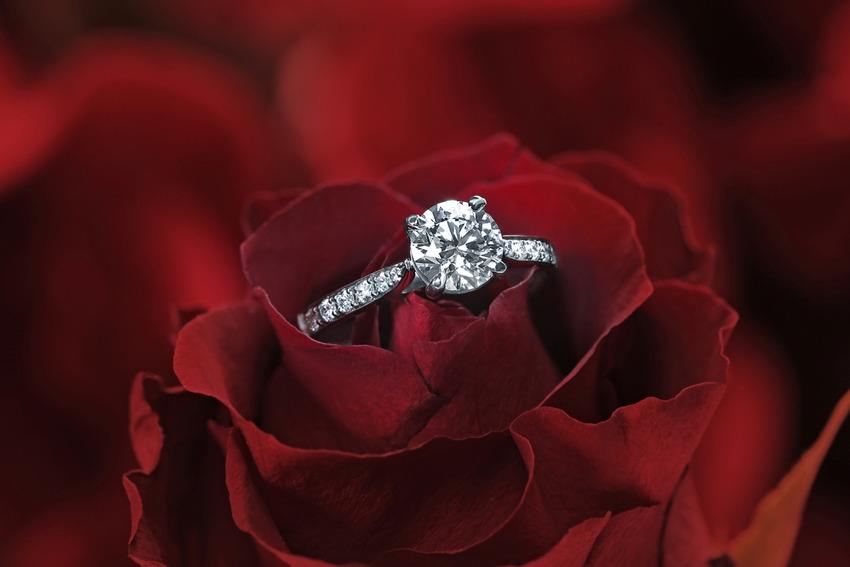
Using natural elements as props can take your diamond jewelry photography to the next level. For instance, flowers and leaves complementing a particular diamond’s colors can make the piece more appealing to consumers.
Use the diamond ring photography example above for inspiration or the photo at the beginning of the article featuring a diamond on a black coal background. The former exudes elegance, while the latter showcases the diamond’s hardness and durability. Therefore, pick the props that best convey a client’s brand message.
8. Use a Gray Card
Expert photographers use gray cards for consistent white balance and image exposure. They’re middle-gray (18% gray) references helping adjust these settings for the most realistic results.
Whatever lighting you use, leverage a photographic gray card to get accurate exposure and true-to-life colors in every diamond jewelry shoot.
Fill the frame with the gray color in the AWB (Auto White Balance) mode, press the shutter button halfway to activate the reflective light meter, and manually adjust the exposure, setting it at zero. Afterward, all your photos will be consistent.
Post-Processing and Editing Techniques for Diamond Photography
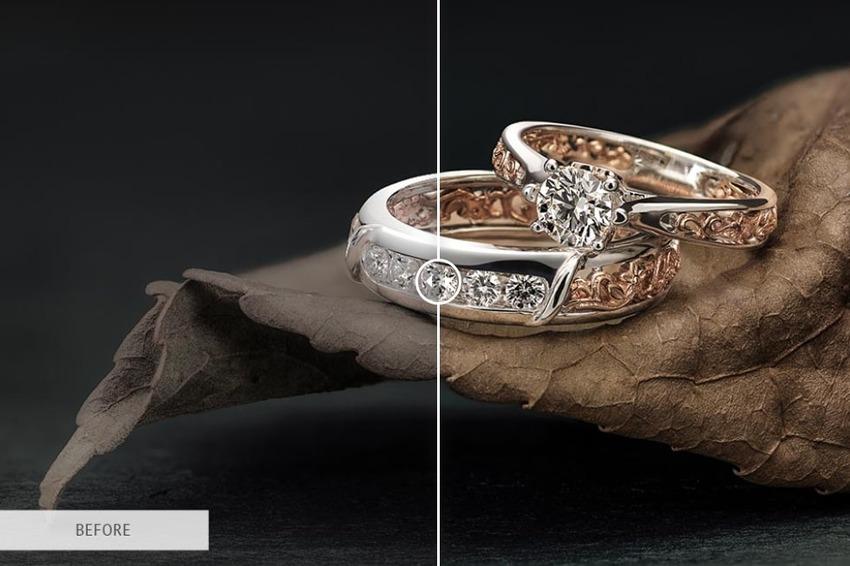
Post-production is when the magic happens. Its most crucial stages are post-processing and editing, valuable techniques for fine-tuning your images and perfecting them for ecommerce catalogs. Here’s what you should do.
Select appropriate software for post-processing diamond jewelry images.
The photography market is teeming with post-processing software solutions, making choosing one overwhelming. However, prominent tools like Photoshop, Lightroom, Luminar, ACDSee, GIMP, and Capture One are always excellent choices, including for diamond jewelry photography.
Still, we recommend conducting thorough research to explore all top-rated options. Read user reviews, watch tutorial videos, consult fellow photographers, and leverage free trials and demos to see how various tools suit your needs before picking your favorite.
Enhance diamond clarity, color, and sparkle through editing.
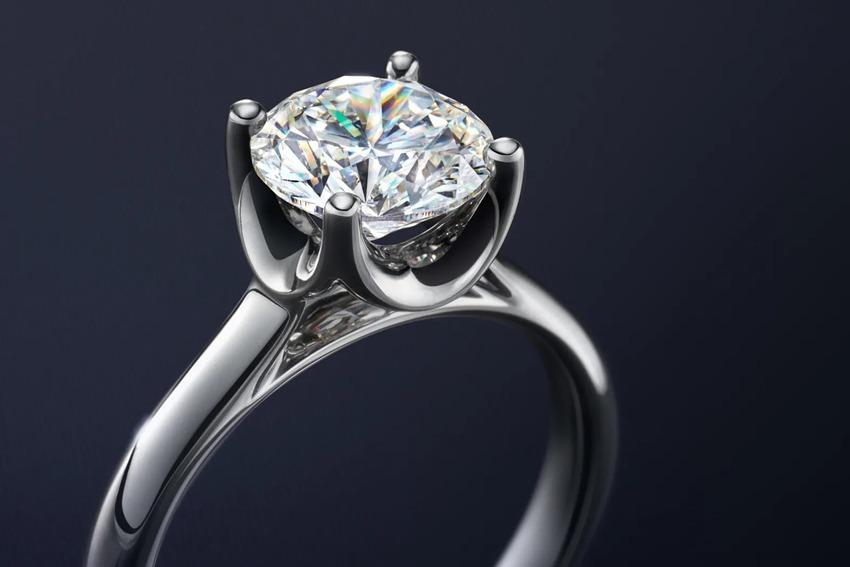
Whichever photo editing software you choose, you’ll have many image enhancement features. Leverage them to correct every diamond’s color, clarity, and sparkle to make it more visually appealing without compromising accuracy.
Accuracy is critical in ecommerce photography (especially concerning expensive jewelry like diamonds) because your clients don’t want to mislead customers and give false promises. They want to build trust, drive sales, and inspire long-term loyalty, so high-quality, true-to-life images are paramount.
Retouch and remove imperfections while maintaining a natural look.
Imperfections like blurry spots, dirt, or fingerprints due to handling jewelry during a photoshoot can ruin your visuals. Fortunately, every AI photo editing software has retouching features.
Besides correcting colors, brightness, shadows, and other technical qualities, these features let you eliminate imperfections to create flawless photographs. Additionally, you can replace backgrounds, add texture to backdrops, remove mannequins, and fine-tune props.
Resize and optimize images for web and print use.
Smaller images help website pages load quickly, providing a better customer experience. Therefore, reduce their size to increase the page load speed, keeping them at 800 x 800 or 640 x 640 pixels.
The format also plays a role, so use JPEG images or the smaller, more modern WebP format for web photos while leveraging TIFF for print use.
Also, create relevant, concise image names and alt texts to optimize your clients’ photos for search engines and help them attract more website visitors.
[NEW TREND] Create Diamond Product Photos With AI
AI product photography tools are all the rage these days. They can create any photo you want within seconds, letting you fine-tune every element to make stunning visuals. Booth.ai is an excellent example. This intuitive text-to-image AI tool creates professional-quality product images following your guidelines. It lets you change backgrounds, use virtual models, adjust the lighting and angles, and enhance your photos without losing quality.

Moreover, it creates 4K product images, perfect for showcasing diamond jewelry in the best possible light.
Here’s how to create diamond jewelry photos with Booth.ai:
- Step 1: Upload product photos and select the product under AI Scene Generation.

- Step 2: Click Product scene change in the Choose Workflow tab.

- Step 3: Describe the desired result using a guided or custom prompt and click Generate Images.

You’ll have high-quality images within seconds, each perfect for your client’s brand and vision.
Conclusion
Diamond jewelry photography may be challenging, but you can master it quickly by following our tips. Practice makes perfect, so experiment with camera settings and compositions to find the sweet spot.
Of course, you’ll make mistakes initially, but that’s why post-processing and editing exist. However, to save the most time and effort, leverage AI tools like Booth.ai since you’ll create impressive ecommerce photos that sell.
FAQ
-
Why is it challenging to photograph diamonds?
Photographing diamonds is challenging because they reflect, refract, and disperse light. Light bounces off their facets, creating illumination effects like brilliance and fire and reaching your camera lens. That produces photos with unwanted glare and shadows. -
What lighting is best for photographing diamonds?
Soft lighting is best for diamond jewelry photography because it reduces shadows and glare. Use directional LED lights, keeping them overhead at various 45° angles, and implement quality diffusers. -
How do you capture the sparkle of a diamond?
Besides proper lighting and a complementary background, adjust the white balance, sharpen the focus, and combine soft and hard lighting to capture the scintillation effect. -
Why don’t diamonds sparkle on my camera?
Direct light can prevent diamonds from showing off their unique brilliance, making them appear duller. Also, diamond scintillation occurs only in motion, meaning you can’t capture the exact sparkling effect in a still photograph.

